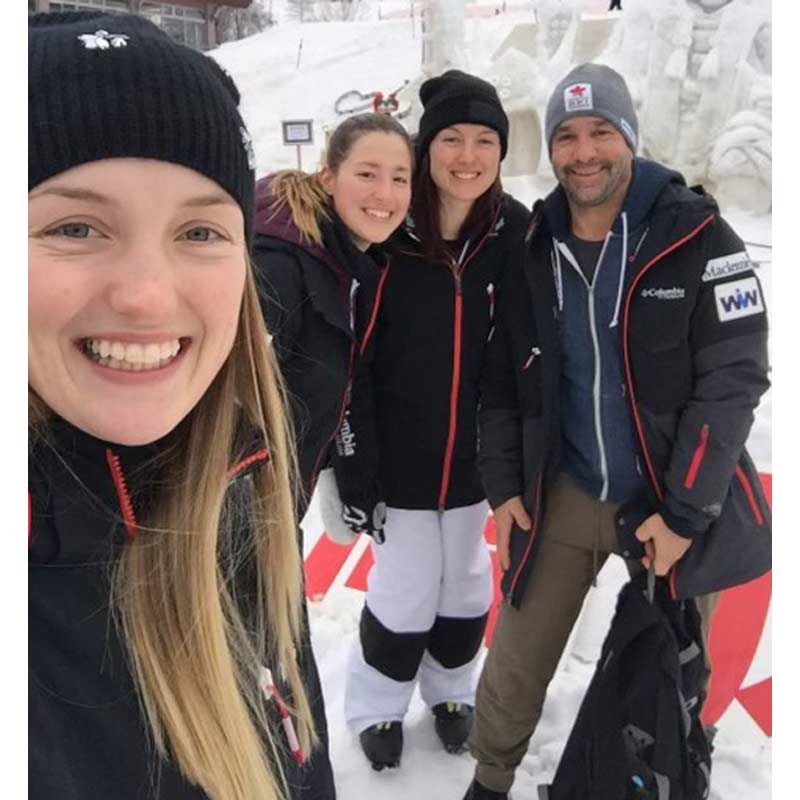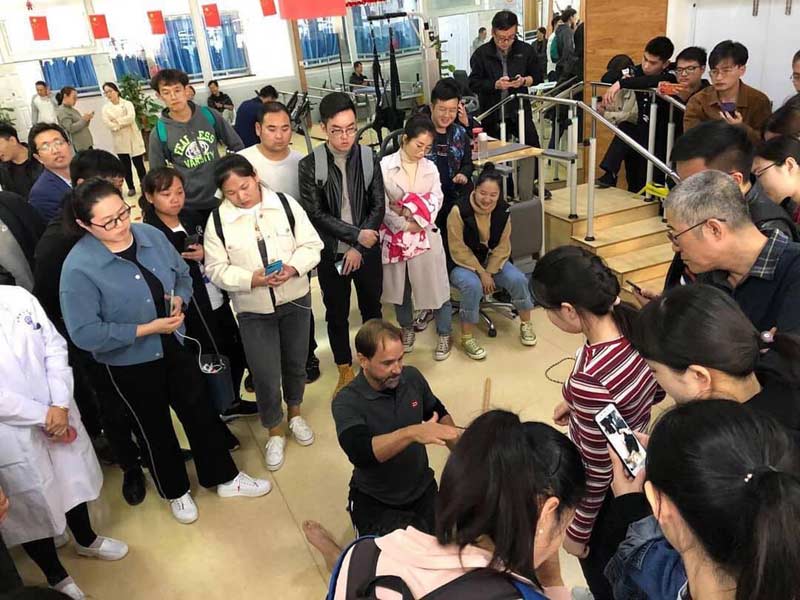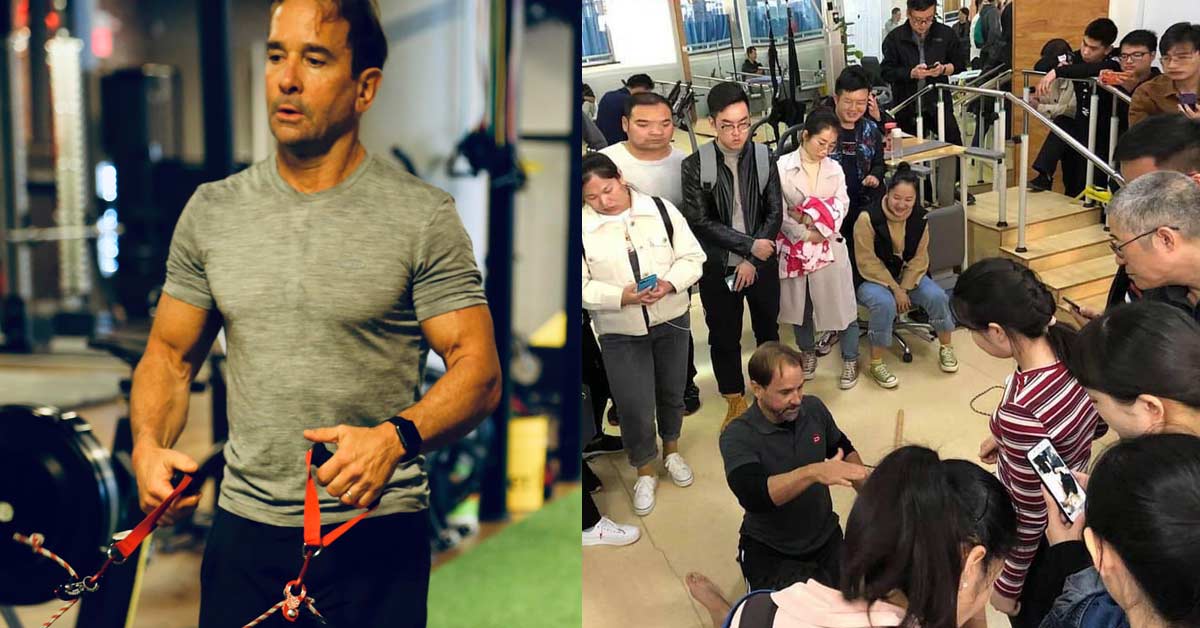Over the past 41 years, Paul Gagné has coached 2005 U.S. Open Golf Champion Michael Campbell, MMA legend Georges St-Pierre, and Olympic champions in three sports. He is also one of the most sought-after “physical preparators” for hockey, having trained over 500 NHL players.
Gagné is known as the “MacGyver” of strength coaching, creating countless exercises for rehabilitation, postural correction, and superior athletic performance. He has also used “airflow restriction” techniques for the past 15 years to increase aerobic fitness and muscular endurance.
Freelap USA: How can postural training influence speed?
Paul Gagné: You can’t talk about speed without discussing foot mechanics. Valgus feet are common in the U.S.—with a valgus foot, your foot collapses inward. This causes the legs to rotate internally, the pelvis to rotate anteriorly, and the body to move forward of the gravity line so that your weight shifts toward the balls of your feet.
You can’t talk about speed without discussing foot mechanics, says @posturology. Share on XThese postural changes reduce the elastic properties of the foot and increase the stress on your hamstrings, lower back, knees, calves, and Achilles.
Freelap USA: Will arch supports or orthotics correct valgus feet?
Paul Gagné: First, visiting a local drugstore and buying cheap arch supports may do more harm than good. Only a podiatrist can accurately assess your feet to determine if you need orthotics.
Generally speaking, I don’t like my athletes to wear orthotics in their regular shoes. They become a crutch because the feet get accustomed to the additional support, and the arches become even weaker.
What I do like are specific exercises to strengthen the muscles that reform the foot arch. One of the most important muscles to train is the extensor hallucis longus, which lifts the big toe. Lifting the big toe creates lateral tension on the foot to lift the arch. An exercise I like for this extensor muscle is to stand on one leg barefoot, lift the big toe, and then twist your body toward your standing leg. You can use a medicine ball or weight plate to increase the resistance.
Why do valgus feet happen in the first place? There are more mechanical receptors on the sole of the foot sensitive to pressure than receptors in the eyes. In the U.S., kids are put in well-cushioned shoes that cause them to lose proprioception in their feet, which is essential to posture and movement. I worked in Jamaica for 16 years and observed their young sprinters. They often run barefoot and on the beach, which helps strengthen the foot muscles and improve proprioception. They all had good proprioception.

Freelap USA: Is the emphasis on functional training in the U.S. headed in the right direction? For example, having athletes stand on Bosu balls to develop stability?
Paul Gagné: First, when David Weck invented the Bosu ball, his intention wasn’t for the device to improve balance but to create compression. I use Bosu balls for compression training to improve an athlete’s ground reactive force. We found that athletes who create the most force displacement on the ground will move faster in sports such as soccer, sprinting, hockey, speed skating, and American football.
The problem with many forms of functional training is there’s not enough load to create a significant training effect, says @posturology. Share on XThe problem with many forms of functional training is there is not enough load to create a significant training effect. David Behm from Newfoundland researched this matter, showing that these functional training exercises have little carryover to sprinting or jumping ability if you don’t load them enough.
If I train a hockey player, I will have about 10 weeks to prepare for training camp. I have to cut to the chase and use superior training methods. If you have the time and want to use these popular functional training methods as a warm-up, fine.
Freelap USA: What is the value of powerlifting and strongman movements in athletic fitness training?
Paul Gagné: I am not a fan of powerlifting squats because they work the legs through a partial range of motion.
One of the top strength coaches in the NFL invited me to visit his facility, and I was shocked to see how little muscle there was around the knees and ankles of these athletes. They were built like horses with huge glutes but had little development of the hamstrings and the muscles around the knees and lower legs. This may explain why Achilles, ankle, knee, and hamstring injuries are prevalent in American football.
Strongman training has little carryover to speed development because they are performed too slowly, often near isometric, and many consist of partial-range movements that create muscle imbalances and tightness in the connective tissues. Also, if postural imbalances are present, exercises such as the farmer’s walk that place high compressive loads on the spine may cause injury. I’ve personally seen many SI joint issues with the farmer’s walk.
Weightlifting is great, but American strength coaches focus on partial-range movements, such as the hang power clean. All my athletes lift from the floor and have significantly fewer injuries because of the full range of motion and synchronization of the muscles.
All my athletes lift from the floor and have significantly fewer injuries because of the full range of motion and synchronization of the muscles, says @posturology. Share on X
Freelap USA: You promote isoinertial training using flywheel devices. How does this type of training influence speed compared to conventional weight training?
Paul Gagné: One quality that sets sprinters such as Usain Bolt apart is that he spends less time on the ground with each step. When his foot touches the ground, his superior eccentric strength enables him to quickly redirect, absorb, store, and release elastic energy created to produce maximum speed and power. Sprinting will improve eccentric strength, but I believe the fastest way to improve it is with isoinertial training.
Isoinertial training uses a flywheel device that works like a yo-yo, such that the faster you push or pull, the faster the device pushes or pulls back. This “high-velocity eccentric overload” is a natural movement that improves balance and coordination at high speeds. The key is to perform the exercises at such a speed that you’re barely in control of the movement.
My three mogul skiers who competed in the Olympics have used isoinertial training throughout their athletic careers, and they generated greater force on the device than many of my NFL players. I’ve used it for over 15 years—I’m 62 and can skate about as fast as I could in my 20s!
Since you’re here…
…we have a small favor to ask. More people are reading SimpliFaster than ever, and each week we bring you compelling content from coaches, sport scientists, and physiotherapists who are devoted to building better athletes. Please take a moment to share the articles on social media, engage the authors with questions and comments below, and link to articles when appropriate if you have a blog or participate on forums of related topics. — SF





